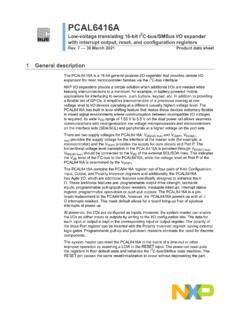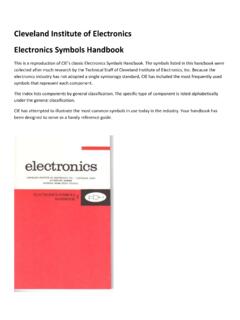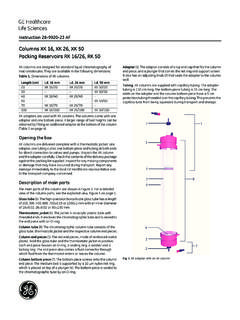Transcription of The Rise of Europe in The High Middle Ages: Reactions to ...
1 The Rise of Europe in The High Middle Ages: Reactions to Urban Economic Modernity1050 - 1300 Dan YaminsHistory ClubJune 2013 Sunday, October 12, 14 Today:Strands that are common throughout time:Two Case Studies: Hanseatic League (Northern Europe ) The Italian Maritime Republics (Southern Europe )Sunday, October 12, 14 Interrelated Themes During an Age of Great Progress Demographic: rise of cities and general population increaseSocio-economic: Rise of the Middle class, burghers and capitalismLegal: Development of rights charters and challenge to feudal systemCommercial: intra-European land trade and European maritime powersLabor & production: Rise of guilds and craft specialization. The time during which Europe took off -- switching places with Asia / Middle East in terms of social of Western modernity Sunday, October 12, 14 General population increase For context: Population levels of Europe during the Middle ages can be roughly categorized: 150 400 (Late Antiquity): population decline 400 1000 (Early Middle ages ): stable at a low level.
2 1000 1250 (High Middle ages ): population boom and expansion. 1250 1350 (Late Middle ages ): stable at a high level. 1350 1420 (Late Middle ages ): steep decline (Black death) 1420 1470 (Late Middle ages ): stable at a low level. 1470 onward: slow expansion gaining momentum in the early 16th 500 650 1000 1340 1450 Greece/Balkans 5 3 5 6 Italy 4 5 10 Spain/Portugal 4 7 9 7 Total - South 13 9 17 25 19 France/Low countries 5 3 6 19 12 British Isles 2 5 3 Germany/Scandinavia 2 4 Total - West/Central 9 12 Slavia. 5 3 ---Russia 6 8 6 ---Poland/Lithuania 2 3 2 Hungary 2 Total -East 13 TOTAL Europe 18 50 Sunday, October 12, 14 Double or tripling of urban population between 1100 and 1200 Sunday, October 12, 14 Demographics.
3 Town physical sizeCologne s walled enclosure was extended from 122 to 223 ha in 1106, and with the wall begun in 1180 to 403 Bologna the Torresotti walls of the late twelfth century enclosed 100 ha, four times the area of the preceding, fifth-century experienced an almost equal degree of expansion from its tenth-century circuit to one enclosing about 100 ha. Over the twelfth century Arezzo enlarged its defended area from 17 to 42 ha;Florence enlarged its threefold to 75 ha; and Pisa s expanded from 30 to 114 ha after 1162. Bristol, a vigorous commercial town and regional centre with much maritime trade, grew from practically nothing in the tenth century to an enclosed area of some 64 ha by the late twelfthDouai, for example, expanded from 6 ha within the tenth-century comital enclosure to 48 ha within the twelfth-centuryBruges grew from 2 ha within the ninth-century castrum, enlarged under comital patronage in the tenth century by the addition of 5 ha for the craft and commercial settlement later known as Oudberg ( old enclosure ), to 76 ha within the wall which existed by about 1127.
4 In Germany the number of commercial settlements rose from about ninety in AD 1000, to 140 in 1100 and to 250 by 1200. In England the comparable totals were about 70, 130 and and numbersSunday, October 12, 14 Demographics: DistributionSunday, October 12, 14 Demographics: From Castrum to BurgusMany rescued or revitalized old roman townsTerms denoting fortification and enclosure, such as burgus, burh and civitas came to be urban namesLondon, Paris, Cologne, Rouen, Bath, Dover, Cambridge, Canterbury, Leicester, Winchester, Nijmegen, Aachen, Augsbury, Bonn, Koblenz, Mainz, Regensburg, Aix-en-Provence, Arles, Strasbourg, Autun, Limoges, Chartres, Avignon, Tours, Cambrai, Lorraine, Carcassonne, Digon, Metz, Reims, Poitiers, Marseille, Amiens, Toulouse, Rennes, Nimes, Geneva, Lausanne, Zurich, Basel, Innsbruck,Genoa, Florence.
5 Almost everything in Italy, but NOT Venice (which was founded by Christians in 420 AD).Commonly situated on important river a defended extension to an existing town, and townsmen were known as , October 12, 14 Reasons for the Rise of the Town:1) General population increase2) Breakdown of central authority ( the Carolingian kingship, the HRE) 3) Developments in Trade. 4) Need for fortifications. 5) Monasteries developed into communities which became towns. 6) The stability engendered by the institutional strengthening of the feudal system; and its economic (agricultural) and legal/military constraints (vassalage).Sunday, October 12, 14 Commercial Revolution: MilitaryMilitary demands did much to stimulate urban of the three crafts in tenth-century England, most popular: shieldmaker, who used leather, while the other two were tanning and butchery, occupying places in the same supply London had a reputation for its stock of hauberks, made of leather and , October 12, 14 Trade development: Transit centersSome of the largest and most populous cities owed their standing to their handling of a transit trade and to their role as centres for collecting and redistributing goods.
6 Mainz had similar positionCologne gained a commanding position in the Rhine trade, served overland routes to the west and north-east, and also came to be an important market for the products of the Meuse controlled the valuable wine trade of the Seine. Lille appears to have prospered as a market supplying corn from southern Flanders to the expanding towns of the northDamme, founded before 1180 as the outport of Bruges, soon came to specialize in handling wine and salt from ValleyRouenSunday, October 12, 14 Trade development: Specialization and craftsIn the twelfth century the specialized craft came to occupy a more distinctive role in urban life than formerlySilks from constantinopleLinens from mainzFlanders: cheese and fishMeuse valley: brass goods and wineZurich: copperCloths and tin from liege and huy and englandTowards the end of the twelfth century Milan was becoming widely known for its production of armour and Pisa for its export of iron from the ore mined in its territories of Elba and.
7 Allowed certain foods .. to be stockpiled and traded as standard commodities .. was a staple of L beck s and woolen textiles from the northSunday, October 12, 14 Trade development: North / South SpecializationCloths specifically from Flanders and Champagne appeared in the Genoese market .. many northern French and Flemish textile towns were known in Genoa by their names, along with cloths from England and Germany. Market advantage and accumulation of skill, rather than the simple availability of materials, came to be key factors in urban industry. The weapons and armor produced in Cologne and Milan used iron from Liege, Bergamo and Brescia, not the immediate vicinity. In the brass- working towns of the Meuse valley, copper and tin were brought in over great , October 12, 14 Trade development: North / South SpecializationMerchants from north of the Alps were regular visitors to Italy about 1020, bringing linen and woollen cloths, tin, swords, horses and slaves to the royal palace at merchants also travelled north.
8 They were at Ardres, near Calais, in the late eleventh century in order to do their business in England . The trade in woollen and linen textiles was above all responsible for strengthening commercial links between north and tapestry imported into ItalySunday, October 12, 14 Trade development: North / South Specialization Some of these textiles were supplied to the local market in and around Genoa, but by the 1180s many of them were shipped overseas to substantial markets in Sicily, Constantinople, Syria, Alexandria and the Maghreb. Sunday, October 12, 14 Trade Faires: A Catalyst of the Commercial Revolution A system of seasonal fairs developed in Lombardy (Milan) from the tenth century and parts of Germany fairs proliferated and gained regional cities acquired new streets and marketplaces to accommodate the tradersSunday, October 12, 14 The Champagne Faires Annual cycle of trading fairs held in towns in the Champagne and Brie regions of France"Veritable nerve centers" serving as a premier market for textiles, leather, fur, and spices.
9 The fairs linked the cloth-producing cities of the Low Countries with the Italian dyeing and exporting centers, with Genoa in the leadThe series of six fairs, each lasting more than six weeks, were spaced through the year's cross the Alps, the caravans made a journey that took more than a month from Genoa to the fair cities. From the south came silk, pepper and other spices, drugs, coinage and the new concepts of credit and , October 12, 14 The Development of Credit and BankingIn most cases, an importer or nobleman would import wine (on credit)Urban trade revolved heavily around credit, wine particularly, These transactions involved more than one Middle man .. and several steps of transaction, so credit was the key currency expander. Then sell it out to wealthy merchants who in turn sold it to local taverns or vendors (again on credit)Credit obtained at the tables ( banche ) of Italian money-changers.
10 Loans to nobility, and settling bills of exchange from the last , October 12, 14 GuildsGuilds -- organizations of people in the same industry to control it -- were one of THE central organizing features of European of textile workers, masons, carpenters, carvers, glass workers, &c &c, each of whom controlled secrets of traditionally imparted technology .. the "arts" or "mysteries" of their path was: Apprentice --> Journeyman --> Master Master craftsmen were considered free or independent if they left their guild .. but that meant they had to go to a city that didn t have a guild in that craft. Sunday, October 12, 14 Guilds Historically, craftsmen tended to concentrate in urban centers and formed guilds -- pretty much sums the whole thing up. Craftsmen were usually in a more privileged position than the peasantry in societal hierarchySunday, October 12, 14 GuildsGuilds are important for socio-historic reasons that redound throughout European and world history: 1) their craft-dedication defined and continues to define the European outlook 2) the social order and superstructure of production they created evolved into a regime that deeply impacted thinkers like Marx (among others) and formed the basis against which the social upheavals of later centuries reacted.













